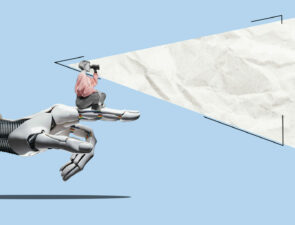I’ve just finished delivering the second of three workshops in our Designing Your Life for Women Digital Journey. In this session we focus on how we get unstuck. It’s all about how we frame the problems or challenges in our life. The magic in the workshop happens when women realize that the way they define their problem creates the boundaries and constraints for possible solutions. It’s magic every time!
Frame Your Problem
During our session women frame a problem they have been stuck on for a while. One particularly challenging problem frame that has shown up more times than I thought possible is “How might I survive my cancer?” a very serious life question and one where they may be little control. Since the people in the room aren’t experts in cancer and don’t know if what a person has can be “cured” the problem frame is limiting and often gets few, general solutions that are often unsatisfying to the problem owner.
Reframe for Round 2
In the second round, we ask everyone to reframe their problem to get at the thorniest issue, root cause or another aspect of the problem. The next frame for this serious problem is usually something like, “How might I get the support I need while going through my cancer therapy?” Now we can all give more ideas on how to define, ask for and get the kind of support that would help on this arduous journey. The radical collaboration and ideas generated by a diverse group of women was amazing and triple in volume! Our problem holders are much more satisfied, and the ideas sparked new realizations that lead to a new question.
Go Crazy on Round 3
In our third round we focus on the ideation process and generating wild ideas. We ask the problem holder to release constraints and focus on another aspect of the problem that has come up through the insights of round 1 and 2. A new question emerges – “How might I live fully and not put my life on hold while I go through cancer treatment?” This problem frame opens up many new ideas from a different perspective. Since we also use prompts to encourage crazy ideas, (e.g. put up an idea that involved fruit!) she got more out of the box ideas that sparked new possible solutions.
Try Stuff!
After three rounds of framing and ideation, people usually have LOTS of ideas – 30 or more. Now we ask them to choose an idea to pursue using the criteria “most opportunity to learn.” Why? Because prototypes are all about trying different ideas/solutions to learn from them. They are not about getting the best or right solution. Women convert the idea they chose into a prototype – a fast, inexpensive experiment – to see if the idea works as they thought it might.
Learn and Iterate
In the third workshop, women report on their prototype action. We are thrilled that almost everyone (>90%) has tried their prototype. For many, the prototype works, and they can incorporate this new behavior or action into their life. For others, the prototype didn’t get them what they were seeking, but they learned either what was missing from the idea or the way they designed the prototype. Now they can build that learning into a new prototype, building their way forward towards new possibilities for their life.
Takeaways
When we asked for the biggest takeaway from this experience, the sentiments of the group was “It’s valuable to have a “safe space to think ‘bigger’ and remove constraints from our ideation. We need this permission and the group support is incredibly helpful.” Another noticed, “How Might I…” is wonderful for approaching problems with curiosity and a designer’s mindset.” A common refrain is, “I got ideas I had already thought of and realized that sometimes it’s not about finding a new idea but actually really trying an existing one.” Lastly, we always hear that “radical collaboration with this wonderful group of generous women is worth the price of admission.”
Click here to learn more about Designing Your Life for Women Workshops.










